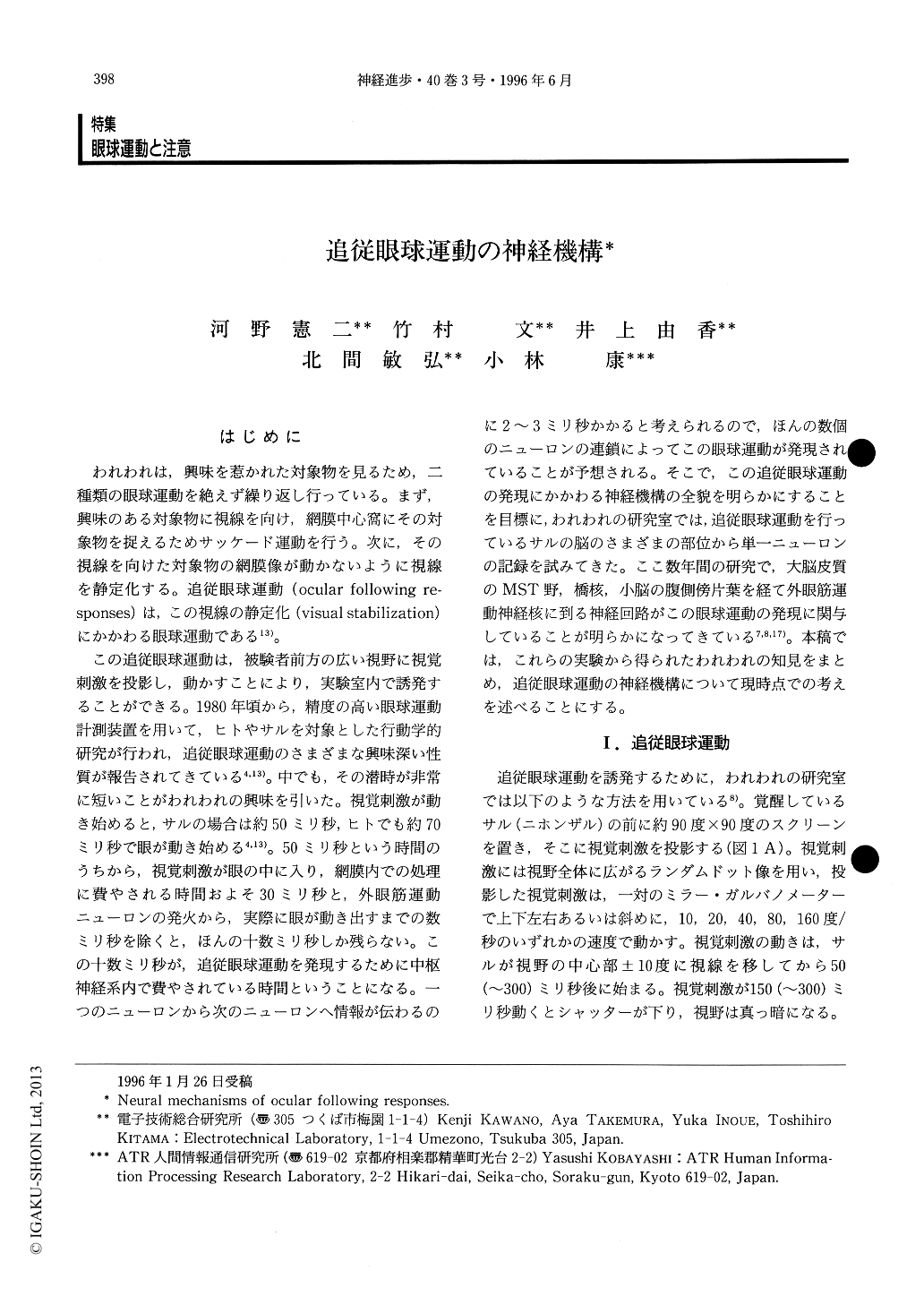Japanese
English
- 有料閲覧
- Abstract 文献概要
- 1ページ目 Look Inside
はじめに
われわれは,興味を惹かれた対象物を見るため,二種類の眼球運動を絶えず繰り返し行っている。まず,興味のある対象物に視線を向け,網膜中心窩にその対象物を捉えるためサッケード運動を行う。次に,その視線を向けた対象物の網膜像が動かないように視線を静定化する。追従眼球運動(ocular following responses)は,この視線の静定化(visual stabilization)にかかわる眼球運動である13)。
この追従眼球運動は,被験者前方の広い視野に視覚刺激を投影し,動かすことにより,実験室内で誘発することができる。1980年頃から,精度の高い眼球運動計測装置を用いて,ヒトやサルを対象とした行動学的研究が行われ,追従眼球運動のさまざまな興味深い性質が報告されてきている4,13)。中でも,その潜時が非常に短いことがわれわれの興味を引いた。
Sudden movements of a large-field pattern elicit ocular following responses, which are short-latency tracking movements of the eyes that are assumed to help stabilize gaze on stationary objects. We studied single unit activities in behaving monkeys during brief, sudden movements of a large-field visual stimulus, eliciting ocular following. The results suggest that these ocular following responses are mediated by a pathway that includes the medial superior temporal area (MST) of the cerebral cortex, the dorsolateral pontine nucleus, and the ventral parafloccular lobes (VPFL) of the cerebellum.

Copyright © 1996, Igaku-Shoin Ltd. All rights reserved.


